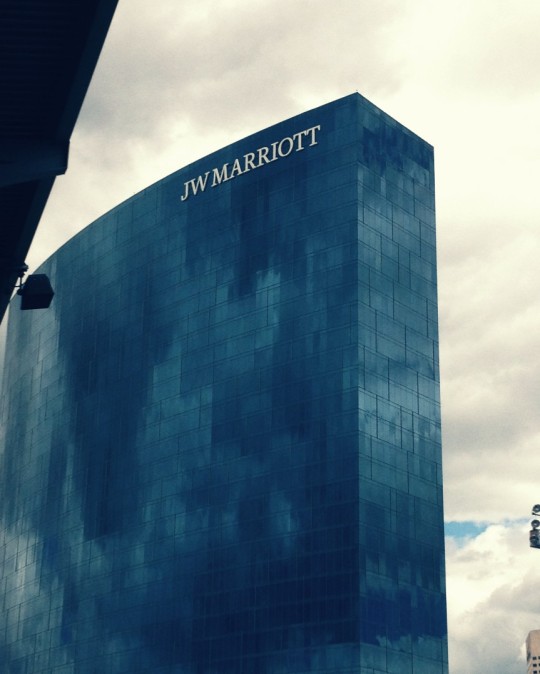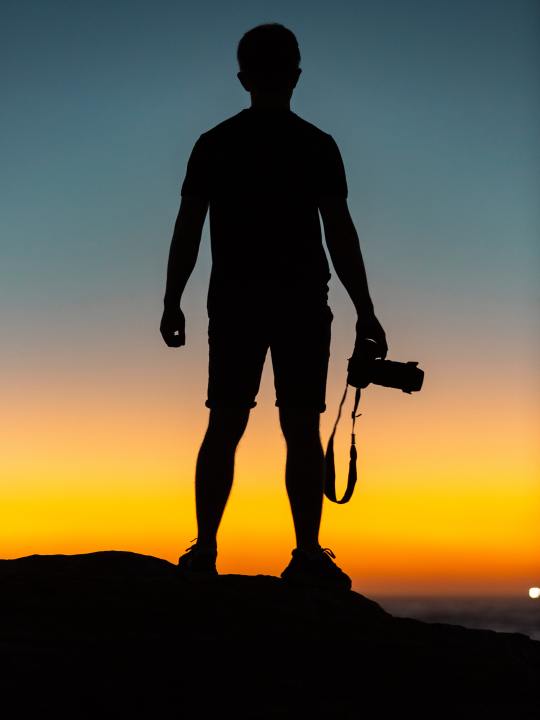Link
6 notes
·
View notes
Link
0 notes
Text
What are the seven photography guiding principles?
Fundamental ideas that can create or destroy a shot are photography principles. They also incorporate symmetry, contrast, and copy space in addition to composition. Let's first examine the foundations of each. After that, we'll discuss how these ideas can be used in photography. Check out The Elements of Art for more details. In a photograph's composition, form is the critical component of design. Photographers can manipulate shadows, highlights, and other features of light to achieve the desired look. These factors generate shapes. The form is frequently utilized to portray an individual in portrait photography. However, these images are also used for various things, including social media profiles, websites, and resumes. A model must sign a model release form, similar to the one used when hiring a photographer, to make these photographs.
Using contrast in your photography is an excellent approach to add interest and make your photos stand out. This idea can be utilized to develop a whole narrative or highlight particular scene elements. Additionally, it can be used with other photographic conventions like color, tone, texture, or concept. Using contrast, you may engross the spectator in the scene, capturing their attention and leaving an impression. Contrast draws attention naturally, so make use of it to your advantage. A crucial component of the composition is copy space. It provides adequate space for the designer to reposition, trim, insert text, and alter the background's aspect ratio. It's simpler to modify and rearrange images with lots of copy space than those without. You can also experiment with the concept by using a blurred background. You can, for instance, rotate, trim, and remove things. It will also assist you in framing the picture. Negative space is unemphasized space around things or locations. For composition, this area is essential since it helps balance heavier areas. Additionally, this area is frequently referred to as copy space by photographers. White space and copy space are not the same, and inserting a copy into white space will unbalance the composition.
A subject appears more lifelike in a shot that strongly emphasizes form. Paper lighting is a component that gives the picture additional depth. Subtle tonal gradations are produced by soft light. Hard light, on the other hand, results in lifeless and flat photos. In pictures, symmetry is a crucial component of the composition. A balanced design with an equal number of vertical and horizontal lines is said to be symmetrical. It strikes a balance between the backgrounds and the objects. A picture of a water puddle, for instance, has symmetrical lines going through it. Radial symmetry, produced by reflections around a point, is another illustration. Both nature and architectural design exhibit symmetry. It is a fantastic technique of photography for developing a beautiful image. Additionally, it can give your photos more depth and vibrancy. Contrast is how a photo's colors combine to convey a visual statement. On the other hand, excellent colors reduce a composition, whereas warm colors emphasize it. In photography, this idea holds for both light and color. Numerous techniques, such as harsh lighting or switching to black and white mode, can be used to accomplish this. It can also be improved by using editing tools or post-processing. Contrast is one of photography's core aesthetic concepts, and its application dates back to the medium's beginning.
An excellent way to explore pattern design is through photography. Both biological and artificial structures come in a wide variety. For instance, a straightforward rock formation or the spiral of a shell might offer a pattern that motivates many photographers. Natural ways can also be used in plant or tree leaf photography. The use of special effect filters can be used to create pattern photography. You can utilize filters, such as the multi-vision filter, which has two rotating components. With no need to cut the picture, you can multiply a subject by six in this way. You may also use cross-star filters to record patterns with the shape of stars. The proper use of backgrounds is one of the fundamental foundations of photography. The location should be carefully constructed to draw attention to the main subject because it is a crucial scene element. Additionally, choosing the appropriate hues and designs might improve your picture portfolio. The most common contrast colors are black and white, but different colors give your images vivid interplay. Movement is another crucial design tenet. Movement includes both the subject's direction and the speed of your shutter. Lines are also essential for photograph design since they figuratively create a "route." Another fundamental idea in photography is balance. The components of a balanced image should have an equal amount of weight. If they are not, the pictures won't look cohesive. A flat image will provide the viewer with a sense of security. An unbalanced view will also cause division.
0 notes
Link
0 notes
Link
0 notes
Text
How to Make the Most of Your Photography Studio Rental
Online booking and appointment scheduling software, such as Agenda, is one of the most acceptable ways to expand your client base. This will let you focus on creating excellent images while increasing your bookings and decreasing no-shows. Furthermore, this training might help you improve your customer communication skills. An efficient cancellation policy will assist you in running your business successfully and reduce the number of cancellations. With a few mouse clicks, you can generate your QR code and use it everywhere.
Using free picture editing software is another method to save time and money. Fortunately, Photo Studio is quite simple to use. It has many interesting automatic effects and makes photo editing a breeze. There is also a free trial edition of this software, which is ideal for beginners and amateurs. If you're seeking more complex software, you might want to look into Adobe Lightroom Classic or Capture One. Once you've decided, you can get a Windows trial edition.
InPixio Photo Studio 12 is an easy-to-use interface with rapid access to all the tools you need to edit your photos. The application supports RAW, CR3 and basic file types such as JPG and PNG. This software lacks advanced tools such as a colour adjustment tool, but it does offer a wide assortment of filters and tools to assist you in creating a fantastic photo. In addition, a fast search and filtering option will assist you in capturing the right shot.
The length of a photo shoot is determined by the style and purpose of the shoot. Simple picture shoots can be completed in an hour or two, whilst more complicated shootings can take many hours. You'll need to provide various other services to become a neighbourhood favourite. In addition to standard services, you can provide your customers with a range of things that will save them time and money.
Choosing a New York City photo studio can help you get the most out of your photo shoot. Because the city is full of creative people, you'll want to select a location that provides high-quality services at a reasonable price. Lighting is equally essential for a picture shoot, so find a lighting provider that can bring your concept to reality. Also, keep your customers pleased by providing them with drinks and other services.
Although most studios have professional equipment, it is often out of reach for many photographers. Fortunately, many studios rent out equipment for a low charge. This gives you greater creative freedom and eliminates the inconvenience of transporting extensive equipment. Furthermore, renting a studio will assist you in avoiding problems and other inconvenient parts of having to set up a studio. You can even set up a picture studio in your own home.
Many firms use photo studios to assist with branding and advertising. As a result, picture studio managers should be aware of current graphic design and marketing trends. They should be able to develop campaigns that are appealing to customers. Furthermore, picture studios are increasingly emphasizing outstanding customer service. They must be able to assist consumers with any problems they may encounter. This means that photo studios should devote time and resources to ensuring the satisfaction of their clients.
Lighting is vital to creating a beautiful image that is frequently overlooked. A decent photograph must be clear and accurate; thus, adequate lighting is essential. A photo flex reflector, an excellent choice for natural studio lighting, is an ideal alternative for getting the optimum lighting for your images. A spring metal clamp is another essential equipment for your picture studio. The MegaDeal jaw-opening clamp is the most OK clamp for picture studios.
Adding effects to your images is an excellent method to improve their appeal. Photoshop, for example, is a robust photo editing software. It enables you to produce marketing materials and other stuff and have fun with your photographs. This software is simple to use and will assist you in creating high-quality images. For example, the program will automatically recognize the subject of your shot and produce a mask of the backdrop. It can also remove items you've placed in an image.
Changing the brightness and contrast of your images is another technique to improve them. Increasing the difference, the darks become darker, and the brights become brighter. You may change the saturation of your photographs in addition to modifying the brightness. This will improve the details of your pictures and make them appear more realistic.
0 notes
Link
0 notes
Link
0 notes
Text
How to Prepare Your Camera for Panoramic Photography
Because the subject must be focused while moving, the exposure speed is critical in panning photography. Fortunately, using a flash can assist beginners in capturing their subject in sharp focus. However, shutter speed isn't everything. In this article, we'll go over how to set up your camera for panning photography and how to choose the best background. We'll also go over the settings that result in great panning shots.
The amount of motion is the primary distinction between focusing on stationary subjects and panning with a moving subject. Their size and perspective change when subjects move toward or away from the camera. On the other hand, a moving car or boat is easy to track because it maintains its shape while moving. However, the same principles apply when panning with a continuous autofocus camera.
While the Single-Point AF-Area Mode is best suited for capturing stationary subjects, a panning camera with the ability to switch between several focus areas is an excellent choice for photographers who frequently change locations. The Single-Point AF-Area mode is useful when the subject is stationary, and a moving camera is impossible. However, if the subject moves quickly, a camera with Group-Area AF will focus on all 5 of its focus points at once.
When panning, a tripod is essential. While it may appear to be a simple step, it is not as simple as it appears. The reason for this is that there are numerous variables involved in panning. To begin, you must quickly lock the focus. While it is possible to use a tripod without panning, you should do so. If you use a tripod, it can help your shots look smoother.
Choosing a moving subject is one way to get a good blurred background. If the subject is moving, it will appear faster and slower. Because its movement is smooth and predictable, a moving car is an excellent subject for panning. Wild animals, on the other hand, are not an ideal subject for panning photos. A good background will make your subject stand out regardless of the subject.
Panning can be both enjoyable and frustrating. If you don't know how to plan properly, you'll end up with blurry images that don't look like professional photos. You should experiment with different shooting styles if you're shooting fast-moving subjects. To stabilize the camera, try shooting with a tripod. You can use the camera's neck strap if you're shooting handheld.
Tripods can also be used as sliders for dolly shots. A tripod will allow you to smoothly pan and tilt while maintaining a level shot. When panning from left to right, this is especially useful. However, you must maintain a steady hand when panning, as even a minor camera shake can result in a blurred shot. The tripod will make panning much easier if you have a steady hand.
Your panning photos should have a distinct background. You should avoid using a background with a consistent color or pattern. This will only work if you have a vertically moving subject. As a result, you should experiment with different colors, lights, and patterns. When selecting a background, remember that the image's composition and color will also play a role.
When photographing in panning mode, match the subject's speed so you can capture the subject while panning. You can also match the subject's shutter speed by pressing the shutter halfway. Remember to keep the auto-focus option on and not fully press the shutter button. Panning shots necessitate being quick enough to capture the subject or risk losing focus.
Knowing how to position your camera is one of the most important aspects of panning. You want the subject to be square to the camera so that you can capture a good image using the motion of the movement. Moving subjects that move toward or away from the camera can be challenging, but cars are simple to track because they retain their shape and size regardless of how fast they move. If you follow these guidelines, creating a good image while panning should be simple.
When panning, the background is just as important as knowing how to position the camera. Backgrounds with textures, features, or contrast will enhance the effect. To create a contrasting image, it is also necessary to select a contrasting color. Making a good image while panning is difficult to master, but once you do, you'll have no trouble capturing an impressive panning shot.
0 notes
Link
0 notes
Text
Motion Photography Ideas and Techniques
In David Koonar’s opinion, motion blur photography may be used to create a feeling of calm or rush in your pictures. A key component in producing this effect is the shutter speed, which is the period of time the camera's shutter is open. While a slower shutter speed results in a fuzzy picture, a faster shutter speed allows you to capture the action. In advertisements for vehicles and motorcycles, these two methods are widely used.
This method entails tracking the subject while using a slow shutter speed to blur the backdrop while preserving the subject's details. Although this method takes effort, the finished product is a delicate, abstract depiction of the topic. Use a tiny aperture and low ISO settings if you want to capture a lengthy exposure. If you want to maintain a constant shutter speed and prevent any camera shaking, a tripod is helpful. The shutter speed must remain consistent in order to maximize the effectiveness of this approach, but it must be compressed at precisely the proper moment to prevent blur.
You need to take special care to align your phone and camera while using a tripod. Make sure your camera is first configured for landscape shooting. Second, make sure there are no obstacles in the way of the subject. Mark the tripod's feet if you can so they can be secured into position. For camera steadiness, you should additionally use a remote trigger. After that, check to see whether your camera's exposure, shutter speed, and white balance settings are set appropriately.
Get a good view of the thing that is entering the frame while photographing a moving subject. Additionally, make sure you have enough space to turn around and follow the motion line until the target is in focus. It is essential to continuously practice and refine this skill. As soon as you get the hang of this method, you may utilize it to make interesting moving pictures. You'll also be able to eliminate obtrusive backdrops and establish a continuous visual flow with experience.
David Koonar pointed out that another method for capturing movement is panning. This technique blurs the backdrop while freezing the subject. Panning requires both a moving subject and a slow shutter speed on the camera. The shutter speed has to be between 1/15 and 2 seconds for panning to be effective. Last but not least, panning is a challenging technique, and the photographer should concentrate on the action's smoothness and the background's blur.
Another method for capturing light trails along a railway track is the long exposure. I captured the photograph with a Canon EOS RP camera at 105mm, f/8, ISO100, and 32 seconds. To achieve a stable shot, the camera has to be placed on a reliable base. The Bulb exposure method is another option if you want a blurred backdrop. The shutter of the camera opens for a sufficient amount of time to record light trails, but you need make sure that the camera is securely fixed on a tripod to prevent it from tipping over.
Getting a feeling of the subject's movement is the most crucial phase in motion photography. Tracking the target while taking the photo via the viewfinder is possible. The subject will be defined when moving if the shutter speed is used properly. The chosen aperture, focal length, and subject speed all have a role in choosing the appropriate shutter speed. If you're unsure, you may adjust the ISO or aperture to get the desired result.
Neutral density filters are the following motion photography method. In order to lower ambient light, this method uses neutral density filters. For the greatest results, utilize a tripod in addition to neutral density filters. Keep in mind that there is no ideal approach for motion photography; some trial and error may be necessary. Plan your shots and don't be afraid to retake them if you're not happy with the results of your initial shot.
According to David Koonar, another crucial step in motion photography is raising your camera's f-stop. You may decrease the depth of focus and blur some aspects of the picture by setting the f-stop. High f-stops may sharpen the whole picture, but low f-stops can blur the backdrop. You could consider utilizing a flash in conjunction with fast shutter rates to compensate for dim lighting. You may use it to lighten up a dark image.
0 notes







